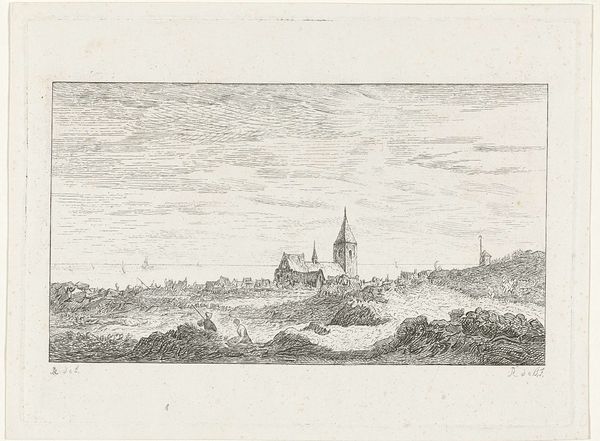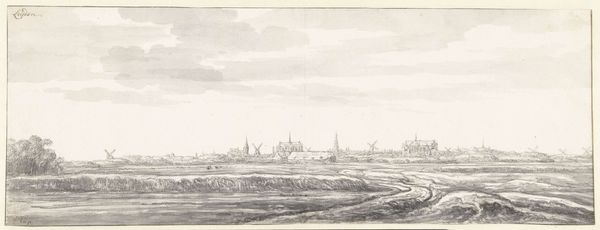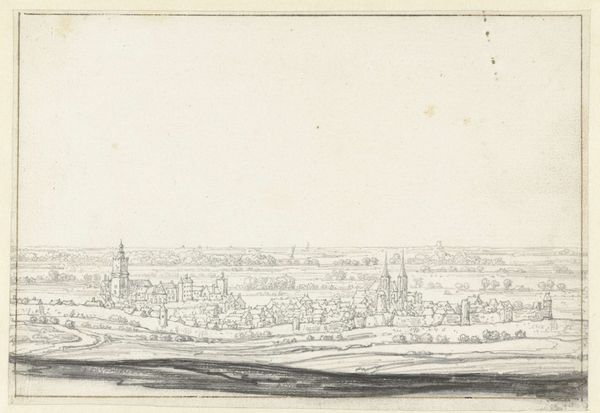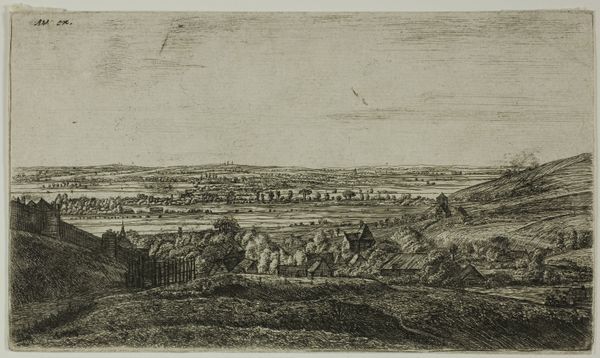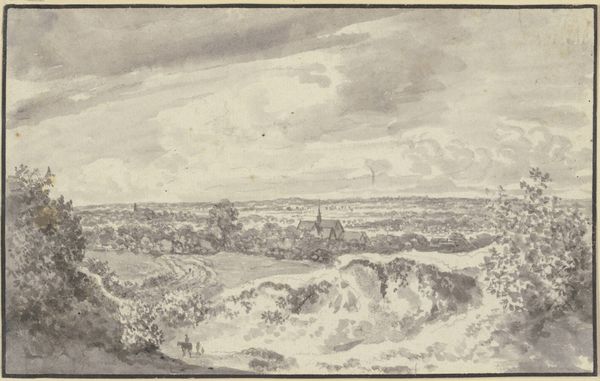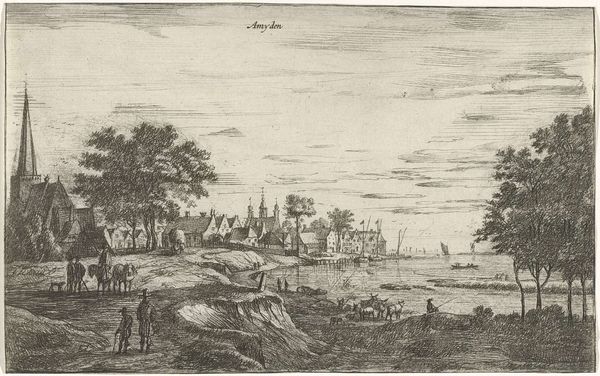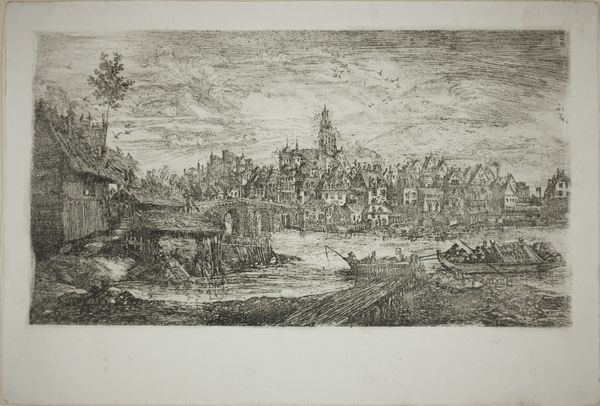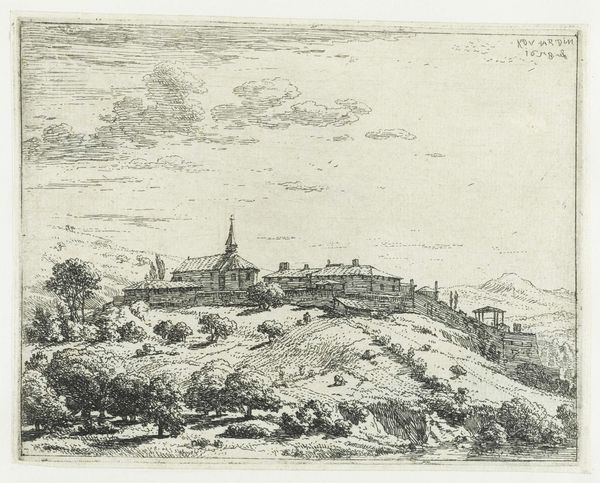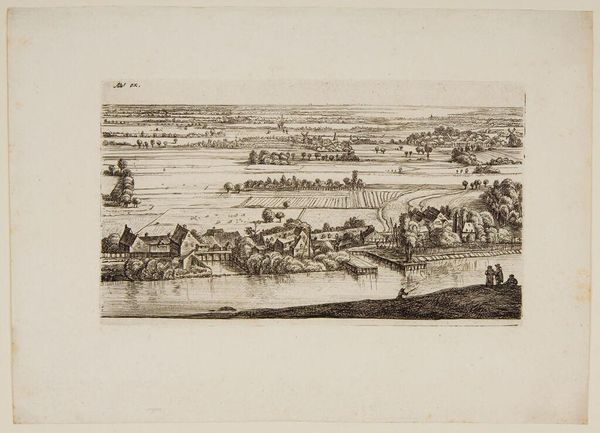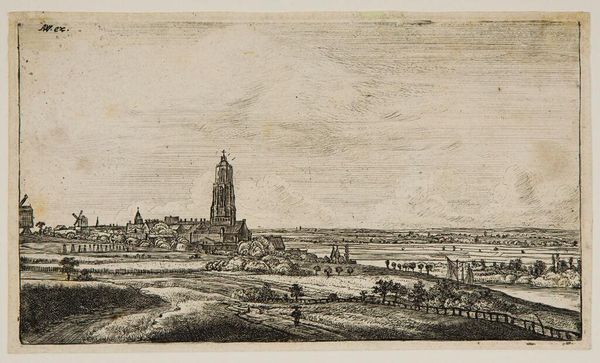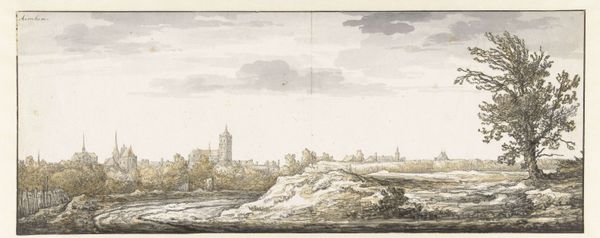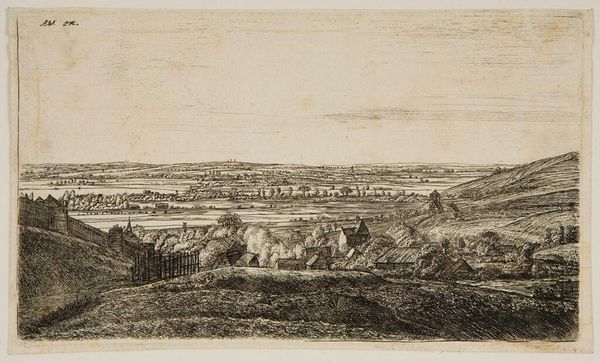
print, etching, engraving
#
dutch-golden-age
# print
#
etching
#
old engraving style
#
landscape
#
cityscape
#
engraving
Dimensions: height 128 mm, width 202 mm
Copyright: Rijks Museum: Open Domain
Roelant Roghman made this view of Zandvoort using etching, a printmaking technique dating back to the early 16th century. Here, a metal plate, likely copper, would have been coated with a waxy, acid-resistant substance. Roghman then scratched an image into the coating with a fine needle, exposing the metal. The plate was then immersed in acid, which bit into the exposed lines, creating grooves. The longer the plate remained in the acid, the deeper the lines. These lines hold the ink when the plate is printed. The prints that are pulled would therefore be mirror images of the original design on the plate. Etchings like this were part of a burgeoning print market, satisfying a growing appetite for images of all kinds. The etching process allowed for relatively quick and efficient reproduction, connecting the labor of the artist to an economy of consumption. Each impression of this view of Zandvoort is a testament to the meeting of artistic skill, industrial process, and market demand.
Comments
No comments
Be the first to comment and join the conversation on the ultimate creative platform.

